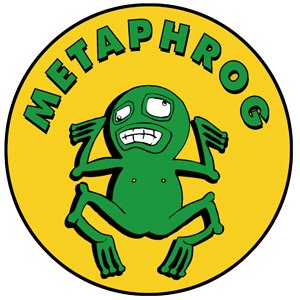
Glasgow based metaphrog are the Franco-Scottish couple, artist Sandra Marrs and writer John Chalmers who have been creating comics graphic novels and illustrations since 1996 to much critical acclaim, including three Eisner Award nominations, and were Highly Commended for the Scottish Children’s Book Awards. Their best known work is their series of self-published Louis books but they have also produced comics work for the Association For Scottish Literary Studies, the Scottish Book Trust, and Creative Scotland. In addition to this they have recently been included in Edinburgh based Cannongate Books’ Future 40 Contemporary Scottish Storytellers list along with other graphic novelists Tom Gauld, Will Morris, William Goldsmith, and Gillian Hatcher of Team Girl Comic.
metaphrog’s latest full-length work is the Time To Shine graphic novel created as part of the Scottish Government’s arts strategy for ages 0-25. This is an accessible story designed to appeal to children and young people from a wide range of backgrounds to inspire them to get involved in the arts in Scotland. Jeremy Briggs talked to Sandra and John for downthetubes about this and their other work.
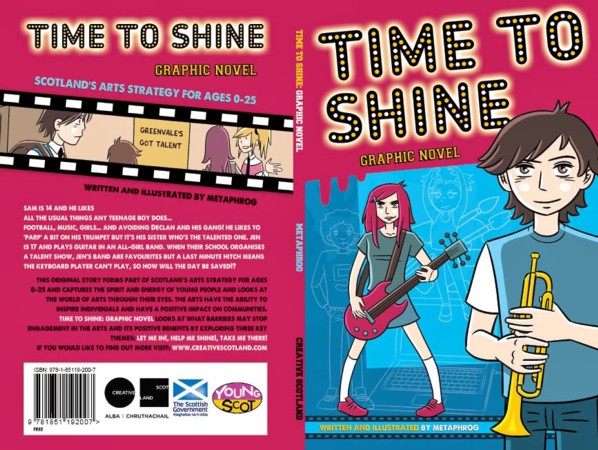
downthetubes: Where did the idea of Time To Shine come about, how did you get involved and, given that you are both writing and drawing it, how close to the client’s original concept did you get?
metaphrog: Time To Shine is the title for the Scottish Government’s new youth arts strategy. Creative Scotland invited us to place a bid for creating the graphic novel, designed to accompany the strategy, back in the spring of 2012. Our bid was successful and we were then given a working copy of the strategy document and hundreds of pages of additional research they had conducted – which included the voices and opinions of young people and adults who had been consulted.
We set about the process of condensing all of this into a work of fiction which retained the title and contained all the key themes and ideas of the strategy. Creative Scotland are very happy with the result. They wanted a vibrant story – not something didactic, in order to engage young people, so in that sense we did exactly what the concept required.

DTT: John, the basic concept for the book seems quite dry, how did you approach writing the graphic novel and did any of what was required to be incorporated in it pose any particular problems?
metaphrog: Art is something we both feel passionately about, so it was a pleasure to work on a project like this. And, having a fairly strict set of themes to cover was, in a way, helpful. For Sandra to have any chance of meeting such a tight deadline and finishing the artwork for the book in three or four months, the story had to be planned out and written in less than a month. So, we both discussed all the dynamic elements that would make the simple plot work, and how we could represent each age group and each art form while keeping things interesting and lively, as I wrote the script. If it didn’t feel natural, it could have ended up dry.
Occasionally we had to make compromises about some elements of the story to fit with the client’s requests. We wanted to subliminally show how art can make a community or a culture blossom but it was also necessary to include some of the things that can stand in the way of engagement with the arts. For example, growing up in the west of Scotland in the 70s and admitting any interest in art would mean you were called a “poof”! It was interesting and enjoyable to work with other people, including the young people at Creative Scotland and at Young Scot and to get their feedback on the dialogue for the book.
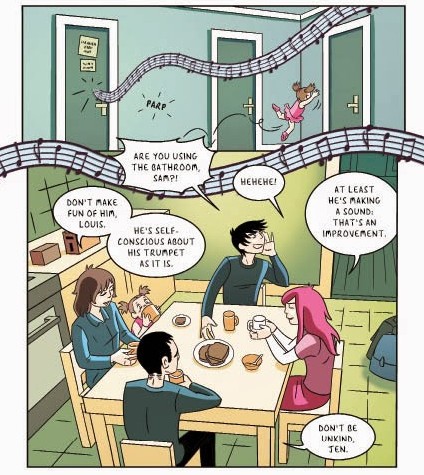
DTT: Sandra, the art style that you use for the graphic novel is different from what you use in the Louis books, more manga-ish, and similar to your style on The First Men On Mercury strip. Was this choice by you or the client and do you have a preference when it comes to your art style?
metaphrog: John and I decided that the Louis style wouldn’t be suitable for this project. It suits the Louis stories, but the Time To Shine story was to be based in reality (albeit a fictional one). The book had to be suitable for ages 0-25, which is a pretty broad age range. Too childlike a style could have alienated the older readers. So we aimed for the middle age range. In our original bid we included a sample page of art, and the people at Creative Scotland, and the young people consulted, were very happy with what we proposed. We also were given a very tight schedule: I had about 3 or 4 months tops to create the artwork. So, I went for a simple drawing style which I felt was achievable in this limited timescale, and worked entirely on screen, rather than on paper. This saved an enormous amount of time.
It was actually quite nice to work on something completely different from Louis, using different techniques. The Louis books are completely handmade and have a particular colour palette and an almost poetic tone. We think the art has to serve the story and, with Time To Shine, the vibrancy of the colour palette reflects the vibrancy we wanted to bring out in the story.
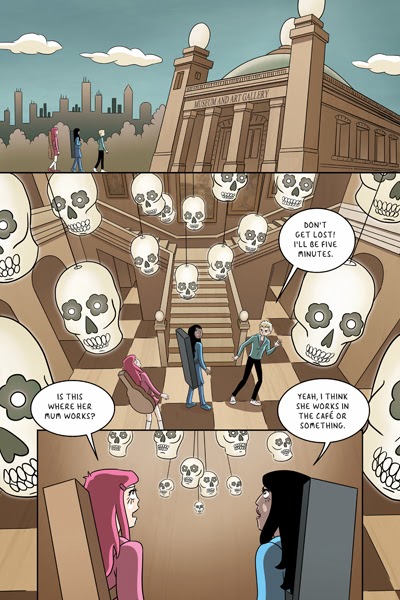
DTT: Where does your comics inspiration come from – what comics did you read growing up and what titles and creators inspire you today?
metaphrog: Lots of stuff! And not just comics! We get inspiration from films (we love to watch old classics from the 40s to the 70s), but also series like The Twilight Zone, literature (recent reads and re-reads include The Diary of Anne Frank, The Magic Toyshop, Rebecca, Patricia Highsmith, Nabokov and James Joyce) and also from music. Growing up we read books more than comics, but did enjoy things like Tintin. Creators that have inspired us are Enki Bilal, Hugo Pratt, Moebius, Jacques Tardi, but also Chris Ware, Charles Burns, Daniel Clowes to name only a few. Museums and art galleries also provide food for the brain.
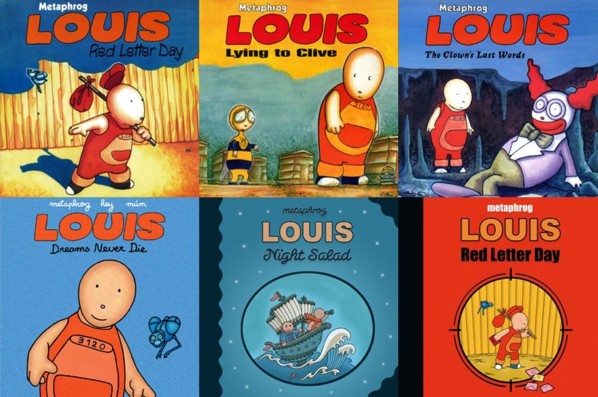
DTT: You are best known for your self-published Louis books. Where did the idea for Louis come from and do you find that publishing the books yourselves gives you more freedom with the character?
metaphrog: After working on Strange Weather Lately, back in the mid-90s, we wanted to create an all-ages comic book that everyone could enjoy. But, the same obsessions and preoccupations probably went into the first Louis book. Concerns about individuals having a role in society, about the environment and ecology, alienation, surveillance, friendship, neighbours, loneliness… We wanted the reader to be able to identify with Louis. Obviously when you self-publish you have complete freedom over the content, which may not have been possible had it been published by someone else. But then again, it depends on the publisher. Some publishers allow complete freedom, as long as the book fits in with the style of their list.

DTT: You regularly run art workshops in schools and libraries and at literary festivals. How did these come about in the first place and is it a part of the job that you both particularly like?
metaphrog: The workshops and talks really started as a consequence of a talk and workshop at the Six Cities Festival in Dundee, and then at the National Library of Scotland, several years ago. They have continued largely through word of mouth since then. We do enjoy them very much. Since we started making comics, we’ve always striven to bring them outside of the normal comic audience. It’s great to be able to reach so many people outside of comics and to spread the word about the medium and about our work. And it’s great to see young people being creative, and realising their potential; while with adults we get a chance to discuss comics and graphic novels. Many people still call graphic novels a genre but it is really a language, a medium or form, in its own right.
DTT: John and Sandra, thanks for taking the time to talk to us.
You can find out more about Time to Shine, and read a free e-copy of the book, on the Creative Scotland website.
You can find more information on metaphrog on their website and buy metaphrog books via their Amazon webstore.
John and Sandra have just been appointed Patrons of Reading for Northfield Academy in Aberdeen for the next three years. This is the first time graphic novelists have been appointed to such a role and it was momentous enough to even be mentioned in the proceedings of the Scottish Parliament. There are more details of the role and what it involves on the metaphrog blog.

metaphrog’s newest title is the beautifully produced 20 page, A5 landscape comic Winter’s Tales, which includes their adaptation of Hans Christian Anderson’s The Little Match Girl plus their own similarly bittersweet tale, The Glass Case, which tells of a boy’s fascination with a museum exhibit.
You can read the downthetubes’ review of Winter’s Tales here.
There are more details of Winter’s Tales on the metaphrog blog and the limited edition comic, signed and numbered to 200 copies, can be purchased during December 2013 while stocks last here.
News, reviews, interviews and features for print and on-line: Spaceship Away (since October 2005), Bear Alley (since February 2007), downthetubes (since June 2007), and Eagle Times (since October 2008). Plus DC Thomson’s The Art Of Ian Kennedy, Titan’s Dan Dare and Johnny Red reprints, Ilex’s War Comics: A Graphic History and 500 Essential Graphic Novels, and Print Media’s The Iron Moon and Strip magazine.
Categories: British Comics, Comic Creator Interviews, Comic Creator Spotlight, Creating Comics, Featured News
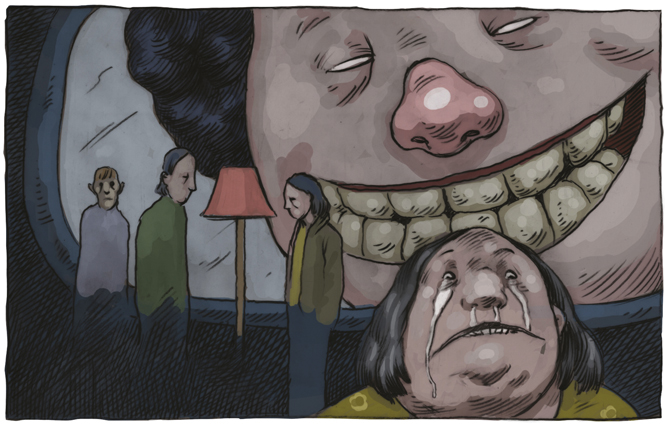 Lakes Festival Focus 2015: An Interview with Comics Writer Si Spencer
Lakes Festival Focus 2015: An Interview with Comics Writer Si Spencer 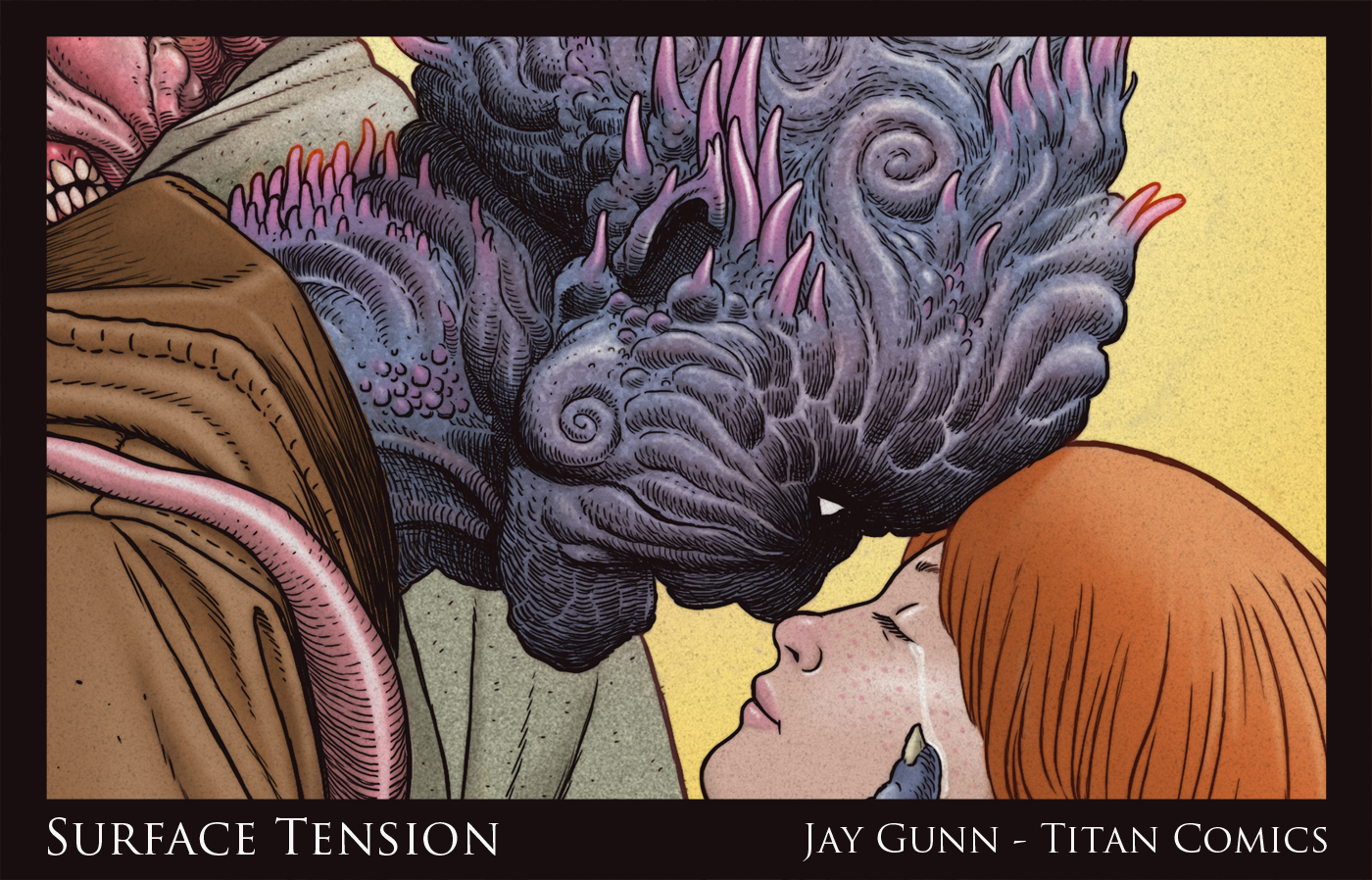 Breaking Surface: An Interview with Jay Gunn, creator of “Surface Tension”
Breaking Surface: An Interview with Jay Gunn, creator of “Surface Tension” 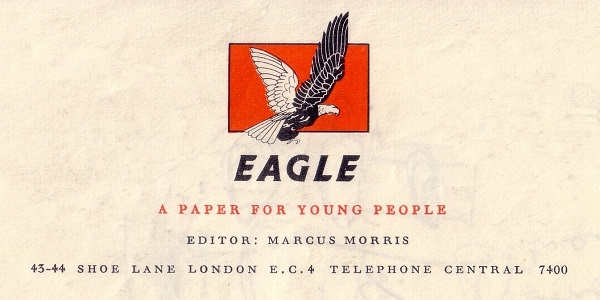 Derek Pierson: Supporting The Wings Of Eagles
Derek Pierson: Supporting The Wings Of Eagles 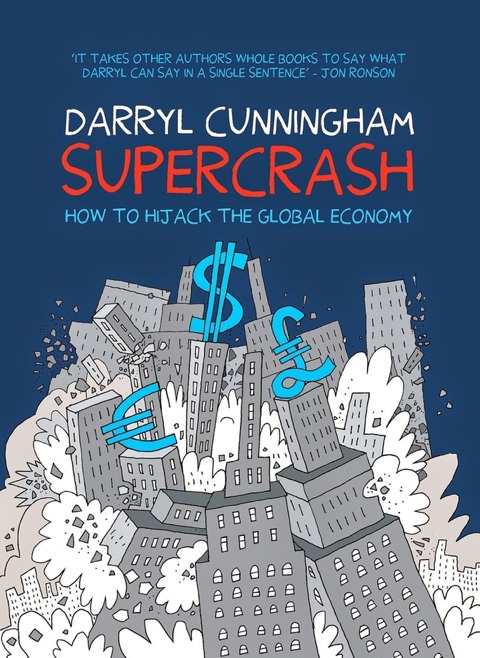 Darryl Cunningham: Taking on the Super Rich
Darryl Cunningham: Taking on the Super Rich